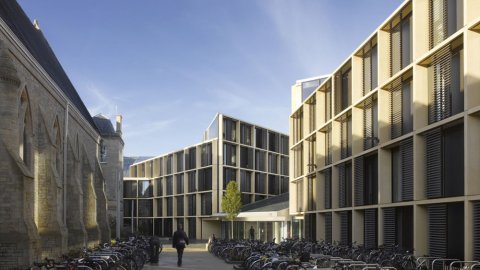Scalable Least-Squares Minimisation for Bundle Adjustment Problems
Abstract
Structure from Motion (SfM) is a problem which asks: given photos of an object from different angles, can we reconstruct the object in 3D? This problem is important in computer vision, with applications including urban planning and autonomous navigation. A key part of SfM is bundle adjustment, where initial estimates of 3D points and camera locations are refined to match the images. This results in a high-dimensional nonlinear least-squares problem. In this talk, I will discuss how dimensionality reduction methods such as block coordinates and sketching can be used to improve solver scalability for bundle adjustment problems.





